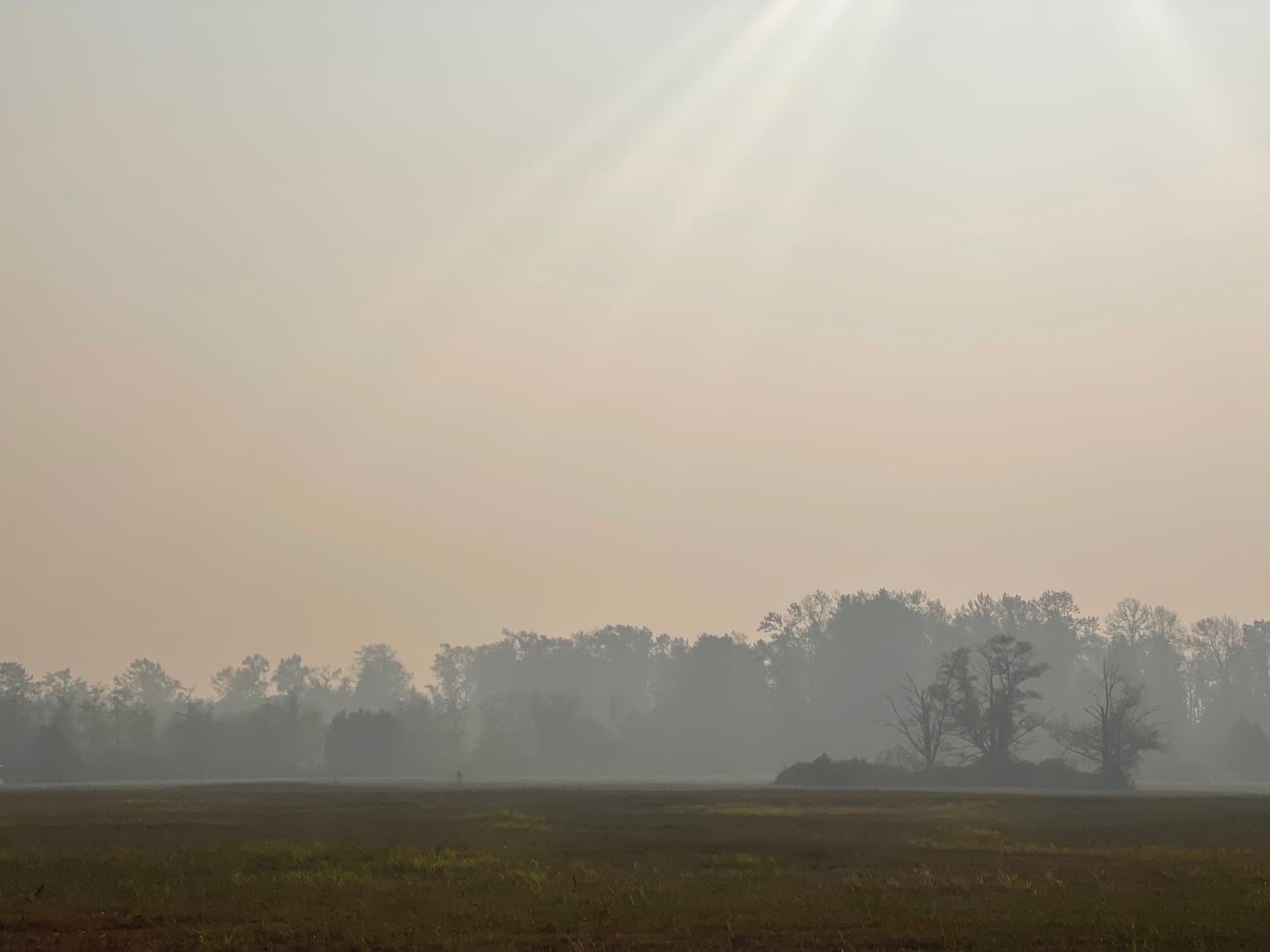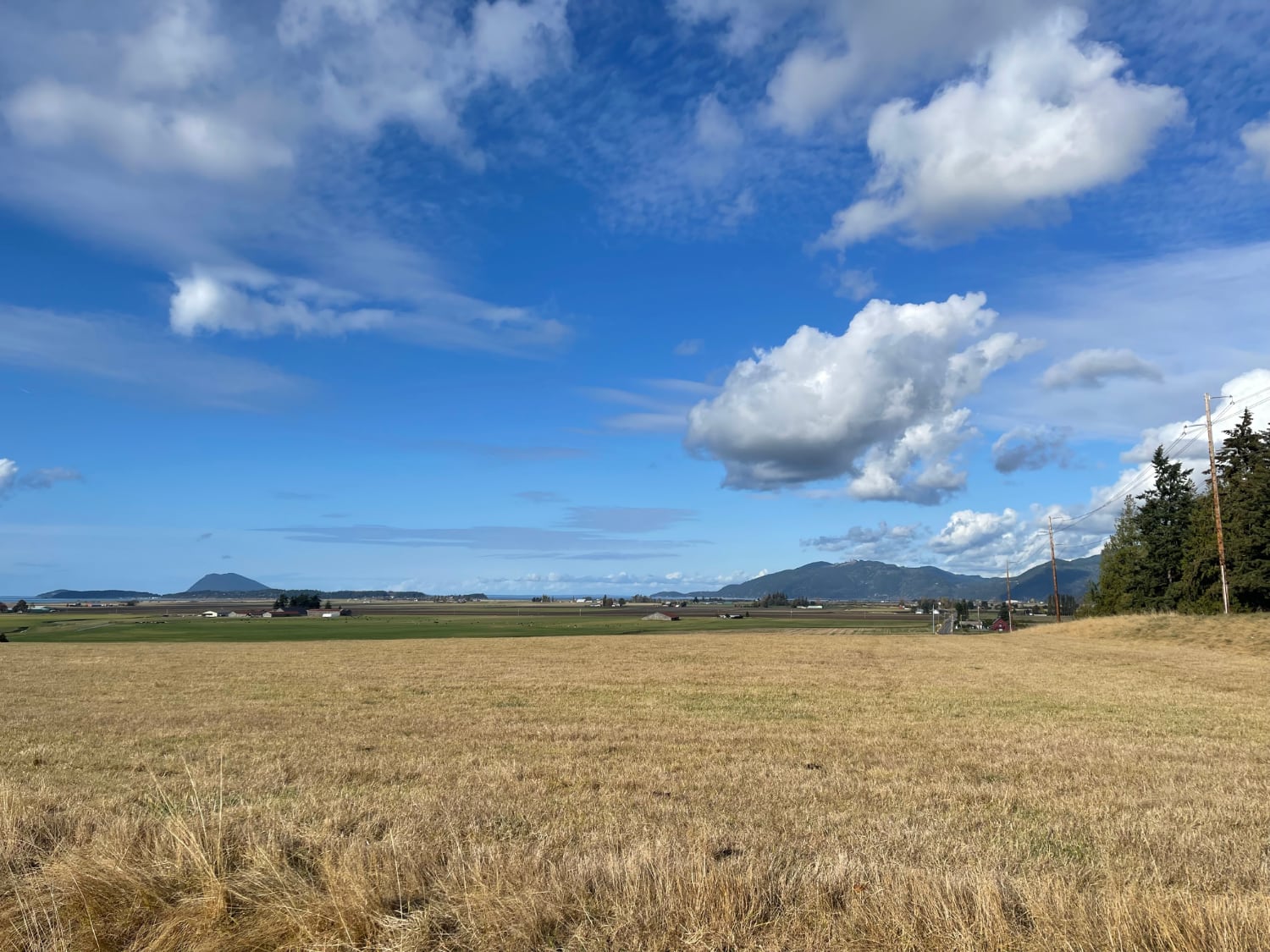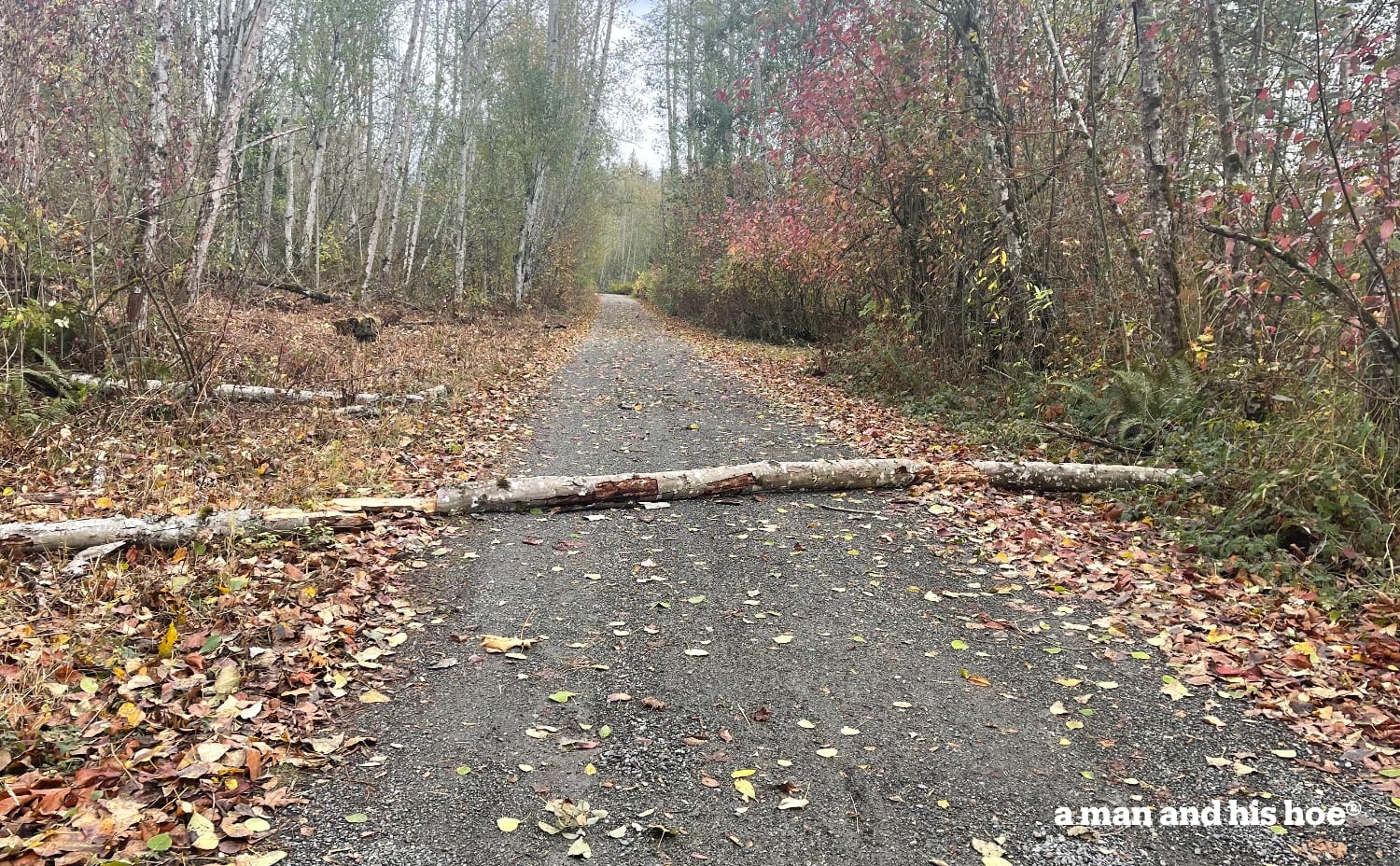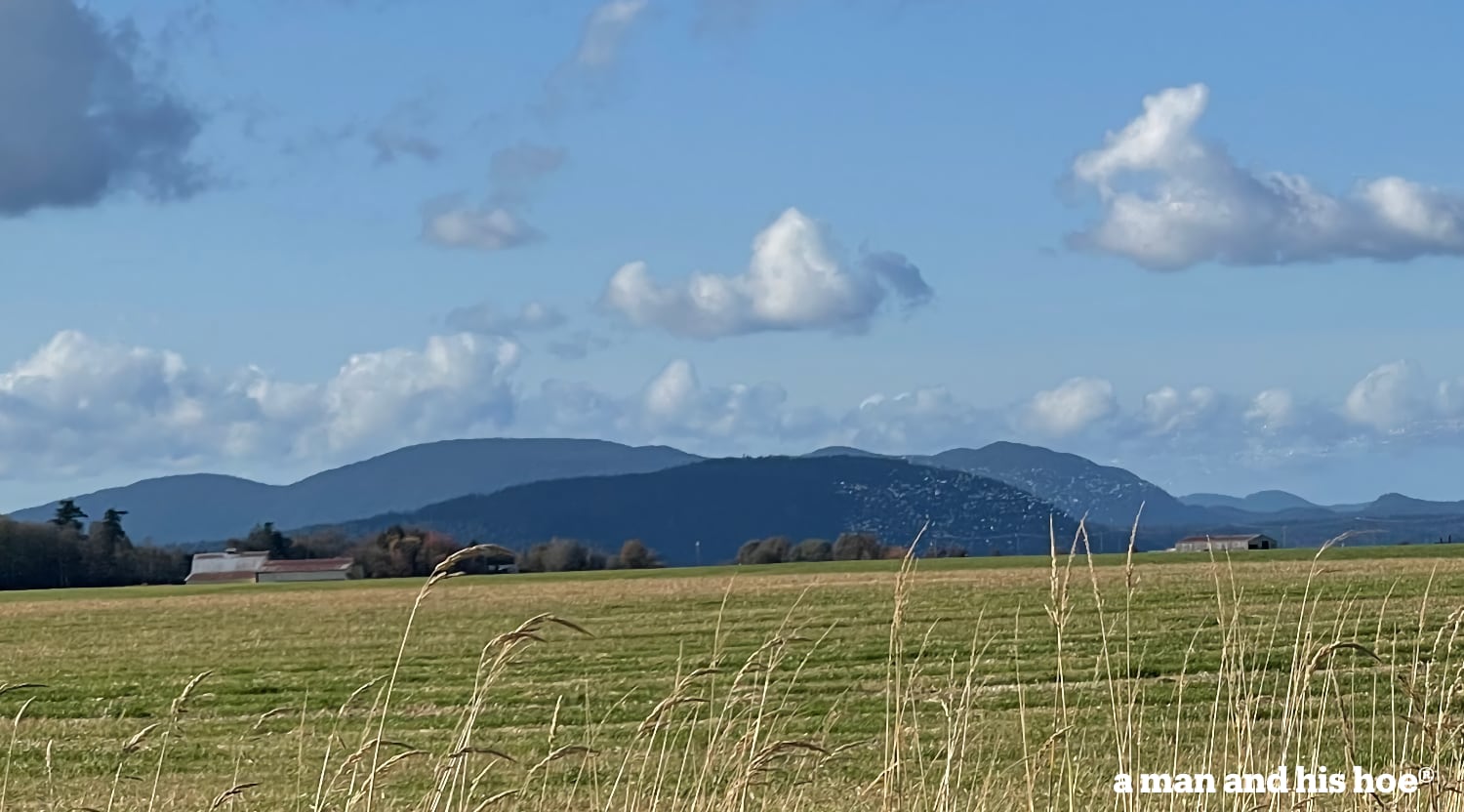
Last week the skies were ghastly with forest fire smoke. This photo is from Wednesday, October 19. At times our air quality exceeded 200. Not something you want to be outdoors in.

But we can breathe again. The fall rains finally moved onshore on Friday, October 21st. For seven days we’ve had gentle rains and a few downpours. The smoke is gone. And the forest fire season is over. We are back to living in the Pacific Northwest.

Now we have fall issues to contend with, like having to clear a log off the lane when we come home from an errand. One of these days a falling tree is bound to smack us on our way in or out. So if you never see another post, that is most likely what happened to me. A tree had enough of my nonsense and decided to take me out. Just saying.
A scientist should study if trees take aim at things when they fall. The answer could give us one more thing to worry about.

And the snow geese are back. I saw a large flock in a field along Chuckanut Drive yesterday. And today streams of them filled the skies. If you look closely in the photo above, you can see a flock as the descend like snowflakes against the San Juan islands. The swans will be close behind.
The migrations of the snow geese and swans from Siberia and Alaska to here are impressive. But I read today that a small, five month old bar-tailed godwit flew from Alaska to Tasmania non-stop, a journey of 13,560 kilometers (8,435 miles) in 11 days. That’s 1,233 kilometers a day (767 miles). An average speed of around 32 miles an hour. That’s an impressive feat for a little bird. What does a little bird think when it takes to the skies from the only place it has known, and flies for 11 days to a place it has never been before? And when it lands, how does it know it reached its destination?